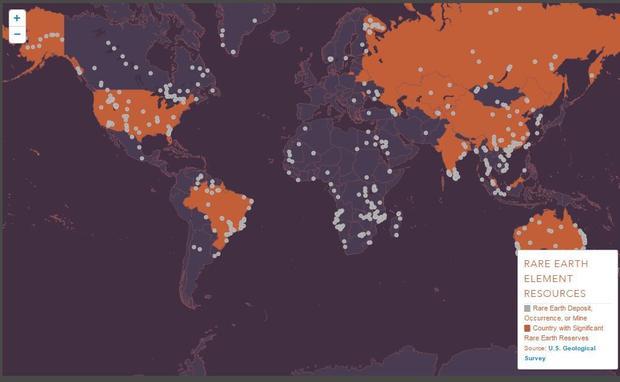The research team included members from the academic, industrial, and government sectors in institutions throughout the U.S., South America, Europe, South Africa, and Australia, all having a common concern, specifically, the possible shortage of the global supply of technology minerals, reports ZME Science.
Technology minerals is a relatively new term, coined by Jack Lifton in 2007, according to Technology Metals Research. They are also known as REEs (Rare Earth Elements), and green tech metals. Basically, they are the often-rare minerals needed to produce the high-tech devices and systems used in everything from cell phones and laptops to hybrid or electric cars to solar panels and the copper wiring inside our homes.
“There are treaties on climate change, biodiversity, migratory species and even waste management of organic chemicals, but there is no international mechanism to govern how mineral supply should be coordinated,” said Ali, the study’s lead author and Blue and Gold Distinguished Professor of Energy and Environment at UD.
Developing a sustainable supply of technology minerals
The research team looked at records covering usage and demand as well as global forecasts and sustainability projections for mineral supplies in the coming decades. The study concludes that current mining operations won’t be able to keep up with increasing demands, especially when considering the “implementation of the Paris Agreement requires technologies that utilize a wide range of minerals in vast quantities.”
It all comes down to the fact that if we intend to fully embrace green technology and we don’t have an adequate supply of the resources to build or create that technology, it won’t do us any good. The research team says we need to put more into our extraction game.
“Metal recycling and technological change will contribute to sustaining supply, but mining must continue and grow for the foreseeable future to ensure that such minerals remain available to industry,” they conclude.
To create and maintain a sustainable green technology future will require international cooperation and coordination on where to focus exploration, what kind of minerals are likely to be found, and what type of bilateral agreements are needed between the various countries. In other words, it can’t be the usual “every man for himself.”
Managing supply and demand
Interestingly, gold, iron ore, copper, oil, as well as other precious metals are sold on a global market. And while the largest percentage of investments in minerals is in gold, it is used mostly for jewelry. On the other hand, rare earth and technology minerals are sold through individual dealers, and for this reason, the prices can vary widely.
Rare earth and technology minerals are also fueling conflicts and being used by some governments as a political maneuver. In 2010, according to Digital Journal, China was accused of stopping exports of rare earth metals and minerals to markets in the United States and Europe.
China, at the time, controlled 95 percent of the world’s rare earth minerals, giving them a lot of political and economic clout, causing a great deal of concern among high-tech researchers and manufacturers.
And more recently, the European Parliament overwhelming approved a law requiring firms to ensure they do not use so-called conflict minerals from Africa and other areas that end up funding warlords, according to Digital Journal. This latest move by the EU Parliament is important to U.S. interests because President Trump is looking at undoing the Dodd-Frank Act, a vast 2010 US financial reform law under which US companies were required to inform regulators if they use metals from DR Congo or neighboring countries.
While most Americans think a repeal of the law by Trump would only effect the sale of “blood diamonds,” it has broader implications for the sale of rare earth minerals, and they have become the “big ticket” item for tech firms today.
There are very few alternatives for technology minerals
Most of us think that if you need a piece of rope to tie something down, and don’t have a rope, duct tape will do the job just as well. This isn’t always the case with technology minerals. For many of them, there is no replacement.
Consider technology minerals like neodymium, terbium or iridium. Science Daily says these minerals are only needed in small quantities, but they are indispensable to making the technology work, meaning that while the scale seems small, the value is immense. Sometimes, there are environmental and economic costs that need to be worked into the equation, and it can be complicated.
The bottom line is simple – To avoid a shortage of an essential resource needed to further our green technology, we need to be considering the best way to handle and maintain a sustainable supply of these minerals now. To wait until we run out is stupid.
“People have been so concerned about climate change that it’s created a real movement around it. We don’t see this around resource use and recovery, even though it is much closer to us on a daily basis,” Ali said.
This very interesting study was published in the journal Nature under the title: Mineral supply for sustainable development requires resource governance.
















